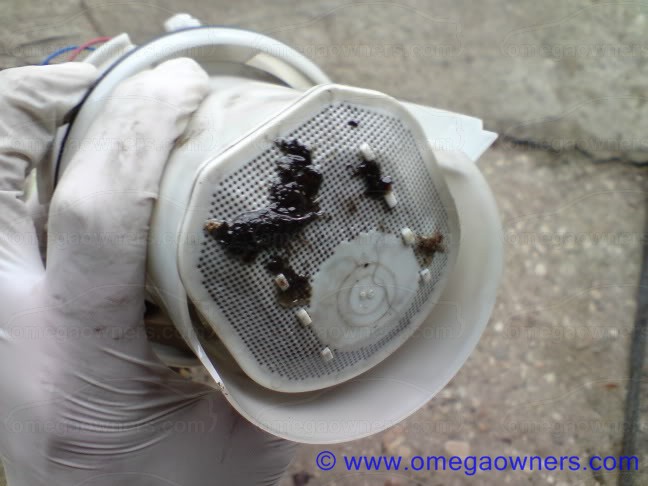2.5 TD Lift Pump Diagnosis/Replacement
Many 2.5 TD owners suffer from fuelling problems such as slow starting when cold & warm, poor starting when fuel is below 20l mark and also cutting out when fuel is below the 10l mark. The majority of these problems will involve the fuel tank lift pump which can be troublesome itself, and the way in which it is mounted can cause a build up of dirt - which eventually blocks the flow of fuel altogether.
To diagnose what the problem is, you will need to remove the whole assembly from the tank and inspect. Before starting make sure you have the minimum amount of fuel in possible as this will make all the tasks much easier and much less messy.
Under the boot carpet you will find this access plate (estate pictured), remove the 4 screws and remove the plate.

You will see the feed and return fuel lines from the top of the tanks and also the fuel gauge sender wiring.

Disconnect the pipes and block the ends with bolts (or rose joints!). Also unclip the wiring plug.

Unscrew the large outer ring anticlockwise and remove from the top of the tank.

The metal plate can then be lifted up to expose the fuel pump - the picture below shows the 4 clips that have to be squeezed inwards to allow the plastic housing to come free of the swirl pot.

Once this assembly is removed, turn the pump housing over and inspect the filter at the bottom - you will more than likely find this is full of dirt and slime. This first picture shows what mine was like when I first inspected it....

... and this picture is the same pump after 2 years of Tesco’s “finest” diesel - this is another good reason to use decent fuel!

The filter can be pulled off the bottom of the pump and can be separated to clean inside. This is worth doing as mine was caked inside also.

To remove the pump from the housing it is necessary to squeeze in the clips inside (shown below) this will allow the housing to be separated.

The pump itself can then simply be pulled from underneath with the rubber seal attached.

This shows the pump unit in its entirety. At this point it is worth making up a couple of leads with a male spade terminal on one end of each and running the pump backwards and forwards across a battery quickly. Don’t run it too much as it I don’t think it is designed to be run in fresh air. You will probably see more muck and slime emerge from its innards.

At this point you will either have a pump that comes back to life and can be refitted, or a pump which is totally dead and will need to be replaced. From Vx they are about £110 (£90 on TC) + VAT so not cheap. They will sometimes appear on eBay for £20-£30 pounds so keep searching if you are tight like me.
The other area that will require attention is within the tank itself. The swirl pot is clipped to the bottom of the tank and will most likely be full with dirt also. This can be removed and cleaned out which is highly recommended if it looks like this:

To see some more pictures on the swirl pot release clips, see “spikerz” post below
They are a bit tricky, and if you have some fuel in the car you cannot see them very well so you have to feel for them.
The problems associated with poor starting can sometimes come from the return pipe between the pump and the swirl pot (ribbed pipe in the picture above). This clip can often end up broken or the pipe is just not connected by some ham-fisted "mechanic" previously investigating. In my case the pipe was unattached and was allowing the pump to draw fresh air. I reattached the pipe only to find the clip was cracked, so I held it in place with a zip strap and it worked just fine.
With the swirl pot cleaned and the pump and housing all cleaned, then everything can be reassembled in the reverse order. Simple as that!
When replacing the rubber seal in the top of the tank (where the metal plate sits) be very careful to ensure that the seal is seated correctly and that the plate sits level. If this is not correct then when you have a full tank of fuel the fuel will spill out and run down the tank and be vaporised as it drips off the base of the tank. The signs of this happening will be a strong smell of diesel and an oily mist all over the back of the car.
When all is reassembled, get an assistant to turn the ignition on whilst you listen closely to the top of the plate. You should hear the pump start and run for about 15-20 seconds whilst it primes the system. It runs longer for this first time as you have been fiddling about with it and air has got in. Under normal conditions it will run for up to 10 seconds.
That should be job done!

 Author
Topic: 2.5 TD Lift Pump Diagnosis/Replacement (Read 15085 times)
Author
Topic: 2.5 TD Lift Pump Diagnosis/Replacement (Read 15085 times)

